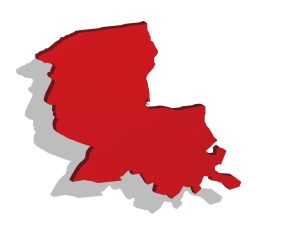This is an opinion article and does not necessarily reflect the views of The Tulane Hullabaloo.
If the Black Lives Matter movement wants to stop unwarranted police shootings of black civilians, it must recognize an inconvenient truth: sometimes, the police have to kill people. As agents of law enforcement, police officers must prevent violent individuals from threatening the order of society. In many cases, this necessitates the application of deadly force.
When police officers shoot citizens who pose an imminent threat to others, rioting under the banner of Black Lives Matter not only damages the movement’s credibility and isolates it from the general public. It hinders progress towards a just and peaceful society. If the movement is to achieve these ends, it must analyze such incidents on a case-by-case basis and respond in a nonviolent and constructive manner.
Unfortunately, this is not what happened two months ago in Milwaukee, where police shot and killed Sylville K. Smith, a 23-year-old black man. Allegedly, Smith ran from police following a traffic stop and turned towards officers with a loaded handgun, despite being ordered to stop running and drop the gun. Smith’s turn towards officers, in the eyes of the police department, was the cause for the shooting. Following the incident, rioters set fire to businesses, destroyed police cars and attacked police with bricks and bottles, hospitalizing one officer and injuring several others. Many of these rioters acted under the guise of Black Lives Matter.
The majority of these incidents of civil unrest, due to police officers killing black men, are different. For example, when an New York Police Office officer choked Eric Garner to death in July of 2014 after he caught Garner selling loose cigarettes, citizens conducted city-wide marches and protests in a peaceful manner. These protests forced major political responses to this heinous use of force.
Equating the killings of Garner and Smith as malevolent acts of violence by racist police officers would be fallacious. It is as hard to understand why police choked Garner as it is easy to understand why police shot Smith. In the latter case, police officers appeared to be quite literally staring down the barrel of a gun, despite repeated attempts to de-escalate the situation. This stands in stark contrast to Garner’s killing, where an officer decided to choke Garner indefinitely, ignoring his repeated cry of “I can’t breathe.”
It would be just as illogical to equate these killings as it would be to equate these occurrences of civil unrest. The response by New Yorkers and American citizens to Garner’s death associated the Black Lives Matter movement with nonviolent demonstration. The contrast between the violence of the NYPD and the peacefulness of the demonstrators strengthened the case for supporting Black Lives Matter, a movement seemingly committed to justice and civility.
With the actions of rioters in Milwaukee, however, the link between the movement and peace is difficult to make. Even if the citizens of Milwaukee were protesting a death the likes of Garner’s, their actions would be unjustified. Harming police officers to the point of hospitalization is not only wrong in itself, but is incompatible with any desire for increased cooperation between police and civilians, or any conception of a peaceful and just society.
The underlying issue, then, is the movement’s decentralized structure. As previously stated, the movement will be unable to win public support and make progress towards a just society if it does not form a collective strategy. Without strong leadership, this will be impossible. Other than a handful of little-known public figures and a general tendency towards nonviolent protest, the movement is devoid of any formal hierarchy, doctrine or goals. This allows both sign-waving marchers and brick-throwing rioters to act under the movement’s name in protest of any issue without the accountability of an authority figure within the movement.
Despite these hurdles, the movement can still be a force for good. It is thanks to peaceful demonstrations in the movement’s name that police-to-community relations and mass incarceration are now mainstream issues. Yet without a coherent set of principles, a capacity to distinguish between individual incidents or strong leadership, the movement will fail to sustain support and cease to advance meaningful change.
August is a freshman at Newcomb-Tulane College. He can be reached at [email protected].









Leave a Comment